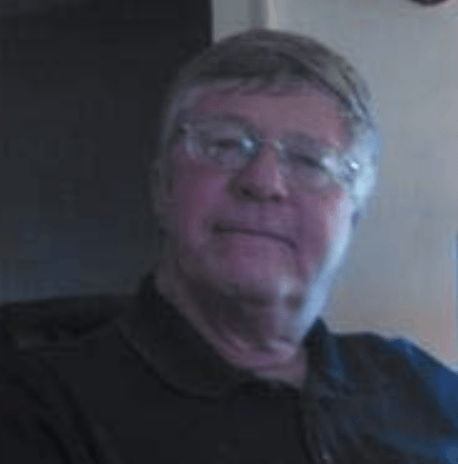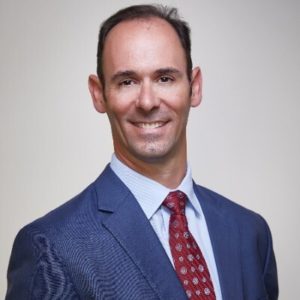Voice-Activated Documentation Comes Into Its Own
As a nationally ranked academic healthcare system, University of Pittsburgh Medical Center (UPMC) serves the health needs of more than 4 million people each year through redefined models of healthcare delivery aimed at improving clinical outcomes. UPMC comprises 19 hospitals and a network of other care sites across western Pennsylvania, including a network of skilled nursing facilities. Because the biggest challenges in long-term care (LTC) are related to technology and staffing, UPMC recently adopted a voice-assisted care documentation program called AccuNurse for its direct care team across four skilled nursing facilities. They report that their application of this new technology has already shown striking results in staffing and financial performance.
Challenges: Provide Better Care, Improve Documentation, Improve Recruiting Outcomes
“In the long-term care environment, there is little, if any, computer automation,” says Dan Grant, director of operations/skilled nursing facilities at UPMC Senior Communities. “The acute care hospitals advanced much more quickly with computer technology than long-term care.”
This set UPMC Senior Communities on its mission to change its course—and vision—for its skilled nursing facilities network. “I started my health career in acute care nursing and was accustomed to computer automation,” Grant says. “When I entered into LTC, I had to get out the paper and pencils again—it was a big change. We wanted to advance our facilities through technology upgrades.”
On the cost side of the equation, UPMC analyzed factors such as care delivery, overtime related to caring for residents, and recruitment and retention, with the goal of reducing staff turnover from 30% to 10%. As part of their due diligence, UPMC visited Kendal at Longwood, which had used the voice-activated system. “I was immediately struck by the improvements in productivity and documentation,” says Charles “Chuck” Emerick, director of nursing at UPMC's Seneca Place. “Our documentation was paper-based and the CNAs would have to wait and document at the end of the day. They relied mostly on memory and handwritten notes and it was very tough to remember all the care provided for 10 or more residents throughout the day. We weren't capturing the true care that was provided to residents, and that was a problem on many levels.”
According to Emerick, what pushed Seneca Place toward the new system was its two-way communication features. “You ask it how to care for a particular resident and it provides the entire care plan,” says Emerick.
Moreover, it appears to provide additional incentive to work at UPMC. In its initial 90 days of use at Seneca Place, UPMC saw LPN turnover decline by 74% and CNA turnover decline by 40%. “Knowing we can lead and use leading-edge technology is a major advantage to hiring and retaining good employees,” says Grant.
Solution: Deployment in All UPMC Senior Communities
Chuck Emerick is leading the deployment effort. “We have three floors and brought each floor on the system one week at a time,” he explains. “For an additional week, we did dual paper documentation to ensure that we didn't lose any data. After that, we went completely live. We were fully implemented within one month—and were completely paperless.”
According to Dino Marchitello, CNA at Seneca Place, life before this could become hectic. “My day started with accessing paperwork stored in three big binders,” he remembers. “I'd have to write myself notes throughout each day so I'd remember what I did for each resident under my care. It was a lot of pressure. But now, I can talk as I go, which is a big time-saver.”
“We're experiencing much less rework in no longer having to contend with paper trails,” says Emerick. “One example is in the area of toileting. It used to take our nursing supervisor two hours to do the toileting report for the entire facility. We can now pull it up in seconds and see which residents need toileting plans. Without a doubt, this enables us to provide proactive care.”
Communication has also been improved. “There's no more shouting down halls looking for someone or to get assistance with a resident,” says Emerick. “We use the system's Silent Paging features between CNAs and nurses. Now the care team can just page instead of leaving a resident alone to get help. If a resident isn't feeling well, CNAs can quickly call a nurse to assist.”
From families’ perspective, they're amazed at how far technology has come. “When someone asks, ‘How is mom today?’ the unit secretaries call it up,” says Emerick, “and give them specific answers right away. They like getting immediate feedback about their loved ones.”
Results: Quality Resident Care, Better Documentation, Improved Reimbursement
The UPMC staff reports that voice-activated documentation has produced measurable and important results.
In November 2006, the facility's Medicaid case-mix index (CMI) was 1.16 ($153.40 per resident per day). Within six months of implementation, the reimbursement CMI increased to 1.29. Based on facility characteristics, 60% of the population relies on Medicaid for reimbursement—therefore, this increase added $375,662 in annual revenue for UPMC Seneca Place.
The Medicare average reimbursement rate increased to $13.23 per Medicare resident per day—an additional $96,579 annually. Facility management attributes these increases to accurate documentation via voice at or near the point of care.
All reports were handled manually before, burdening the dietician, RNs, unit supervisors, and unit clerks with paperwork. Three months after implementation, the dietician who was once spending 1.5 hours a month manually reporting on weight loss now spent just three minutes of her time each month—a savings of 87 minutes/month for the dietician alone.
Likewise, the unit supervisors and RNs had been spending an enormous amount of time identifying those residents who did not have a bowel movement in the last three days, calculating their intake and outputs, and reviewing end-of-shift documentation completeness. Within three months, the time consumed by these three daunting tasks decreased from 27.5 hours/week to 45 minutes per week. The time savings calculates to 26.75 hours/week or 107 hours/month, equating to a 0.67 full-time equivalent (FTE).
Prior to implementation, the unit clerks estimated that the amount of time they spend filing and preparing monthly paperwork for the CNAs was 42 hours/month for these two tasks alone. Now no filing is required and very little paperwork needs to be prepared.
The impact goes beyond savings on paperwork. Before implementation, Seneca Place reported that the care staff spent 30 minutes each day searching for other staff members. With the Silent Paging feature, staff reports that they now can find others within five minutes (an 83% reduction in time). According to the current staffing model, the facility now needs a total of three unit clerks, 42 CNAs, 16 LPNs, and five RNs to staff the facility during a 24-hour period.
The new system also ties into UPMC's e-records vision and strategy. “In our skilled nursing facilities, we're able to access e-records from the hospitals,” says Dan Grant. “Likewise, we see the voice-activated system as an extension to this model. For example, when we send a resident back to the hospital for a procedure, our goal is for hospital personnel to access the resident's records seamlessly. This will be an important factor in achieving that.”
Emerick summarizes, “This has had a tremendous impact at UPMC Seneca Place. Our residents are getting the care prescribed to them. We now have more accurate documentation and everyone finishes right on schedule. But most importantly, our CNAs go home at night knowing they're taking better care of their residents, which is a winning scenario for everyone.”
For more information about Vocollect Healthcare Systems, phone toll-free (877) 282-3456 or visit www.healthcare.vocollect.com.
Sidebar
Results Summarized For…
Seneca Place, UPMC, a skilled nursing facility with 178 skilled nursing beds:
Medicare reimbursement increased by $96,579 annually.
Medicaid reimbursement increased by $375,662 annually.
Marked improvements in accurately reported RUG levels.
Reduced time spent on generating reports by 95%.
Reduced time spent searching for other staff by 83%.
Eliminated all CNA paperwork.
Direct influence on LPN and CNA turnover reduction.
ROI: System paid back in less than three months.

Richard L. Peck was editor in chief of I Advance Senior Care / Long-Term Living for 18 years. For eight years previous to that, he served as editor of the clinical magazine Geriatrics. He has written extensively on developments in the field of senior care and housing.
Related Articles
Topics: Articles , Clinical











